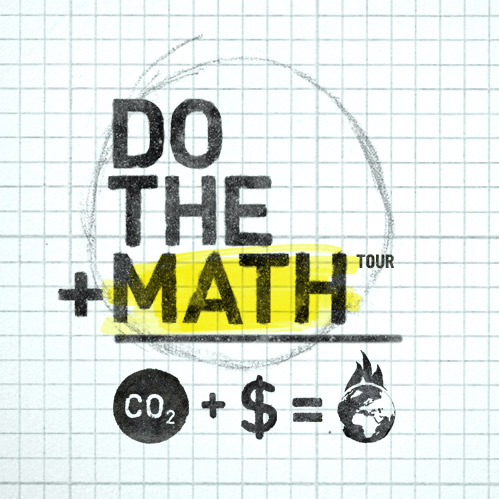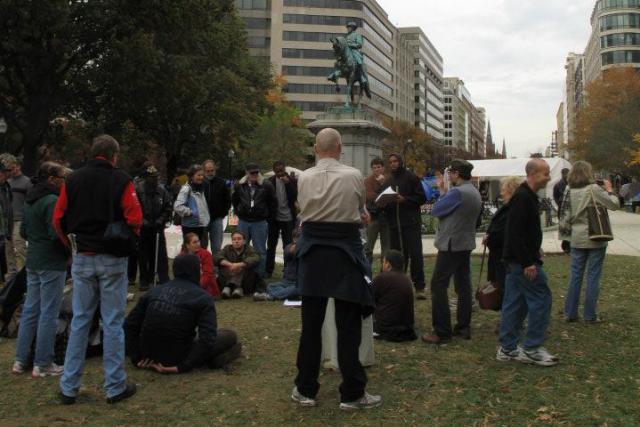 I spent a quaint Friday evening in New York in the company of DJ Spooky, Bill McKibben, Naomi Klein, and hundreds of other attendees of the Do The Math tour. Like an old fashioned tour (and I mean old fashioned—think traveling presidential campaigns of the 19th century), McKibben and friends were there to rouse the audience to their feet around the biggest threat facing us this century—today and in the next 50 years: climate change.
I spent a quaint Friday evening in New York in the company of DJ Spooky, Bill McKibben, Naomi Klein, and hundreds of other attendees of the Do The Math tour. Like an old fashioned tour (and I mean old fashioned—think traveling presidential campaigns of the 19th century), McKibben and friends were there to rouse the audience to their feet around the biggest threat facing us this century—today and in the next 50 years: climate change.
I’ve been mulling over a few of McKibben’s points, including what could be considered a movement’s currencies and actionable media literacy. These are explained in more depth at the end of the post, but before we get there, let’s set the scene:
There are three numbers to remember, McKibben explained. The first one is 2°C. If there were any number the world’s governments agreed on, a rise in temperature by two degrees would devastate the world as we know it. Since the 2009 consensus in Copenhagen, we have already risen by one degree. This also means that since 2008, the acidity of our oceans has increased by 30% and a third of summer sea ice has disappeared. Where did all that water go? Into the air, swollen with humidity, which has made climate unpredictable around the world.
We can only burn another 565 gigatons of carbon dioxide (second number) before reaching 2°C, and globally, we burn 30 gigatons a year. At that rate, we will deplete our allowance in 16 years, but oil companies have a proven reserve of 2,795 gigatons (third number)—enough to raise the temperature by nearly five more degrees.
There is at least one oil and gas lobbyist for every member of Congress. We are not going to outspend the oil companies, McKibben said. But movements have other currencies.
It was students who drove universities to divest from South Africa during apartheid, and it’ll take students again to get their universities to divest from oil companies. Their elders are with them, McKibben said, highlighting the arrest of a dean emeritus at Yale and a former White House official who participated in protests against the Keystone XL oil pipeline. “I’ve held numerous positions and public office in Washington,” said Gus Speth. “But my current position feels like one of the most important.” Protesting against the same pipeline, a veteran readied himself to be arrested with a sign around his neck: “WWII vet—please handle with care.”
If you’re going to get arrested on behalf of the climate movement, please wear a dress and tie, McKibben said, touching on media literacy. It reminded me of an OccupyDC meeting, where participants discussed their representation in media, and how to guard actively against the use of scenes out of context. OccupyDC was knitting together diverse interests and feelings under one movement, and they honestly confronted how any single participant’s stray action could be misportrayed in an image, a soundbite or at tweet-length to discredit an entire movement.
Here, McKibben was heading it off. Although just a minority of people wear a suit and tie each day, the outfit is a familiar symbol of seriousness and respect in American culture and beyond. Despite all the complexity and implications of why we might react as we do, seeing a handcuffed suit is visually arresting. I was struck by how understanding media consumption and the power of images can result in actions to make a movement feel accessible to viewers at home.
So: divestment, arrests, media creation and turning media portrayals into an advantage. What are some other currencies?


